Introduction to L7|ESP (replace)
Why L7|ESP?
Historically, Life Sciences has suffered from having its data and processes siloed and disjointed, resulting in tremendous inefficiency and lost insights. This lack of visibility across internal and external operations stems from the data and processes being maintained on paper, in spreadsheets, on separate instruments and servers, etc.
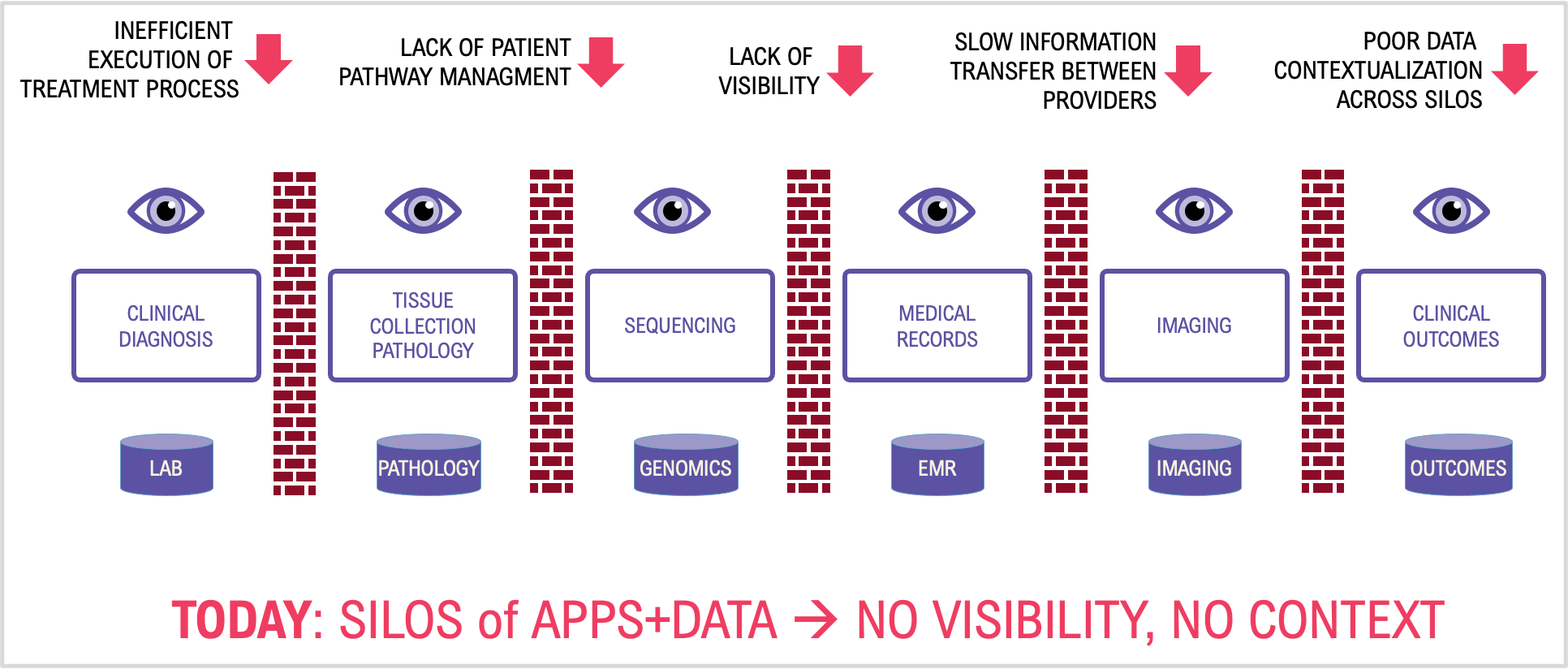 |
L7|ESP solves the silo problem by bringing all these data and processes together into one unified digital platform, boosting transparency, efficiency, and intelligence.
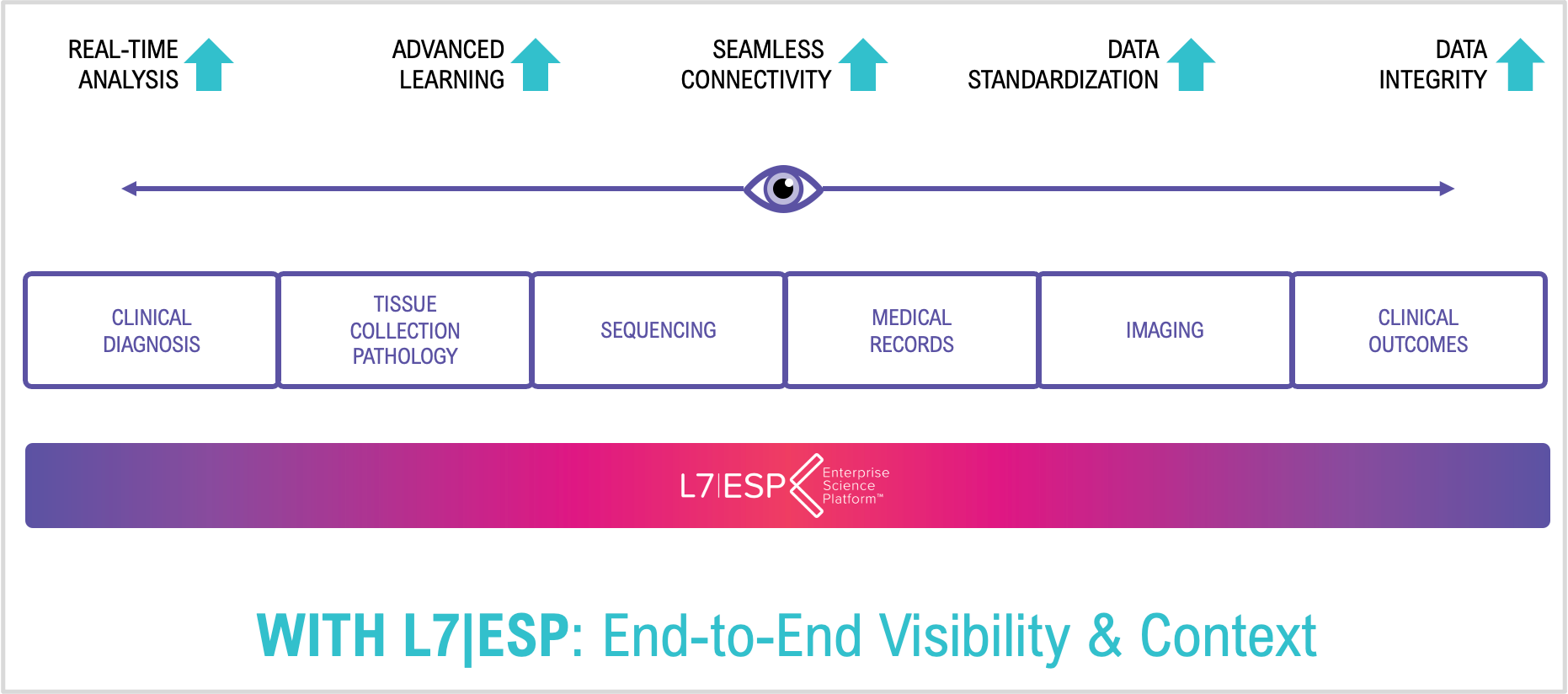 |
Businesses have three key Business System levels: planning, operations, and execution.
Over the years, a lot of work has been put into unifying the planning level through the advent of Enterprise Resource Planning (ERP) systems. However, the operations and execution levels remain largely siloed.
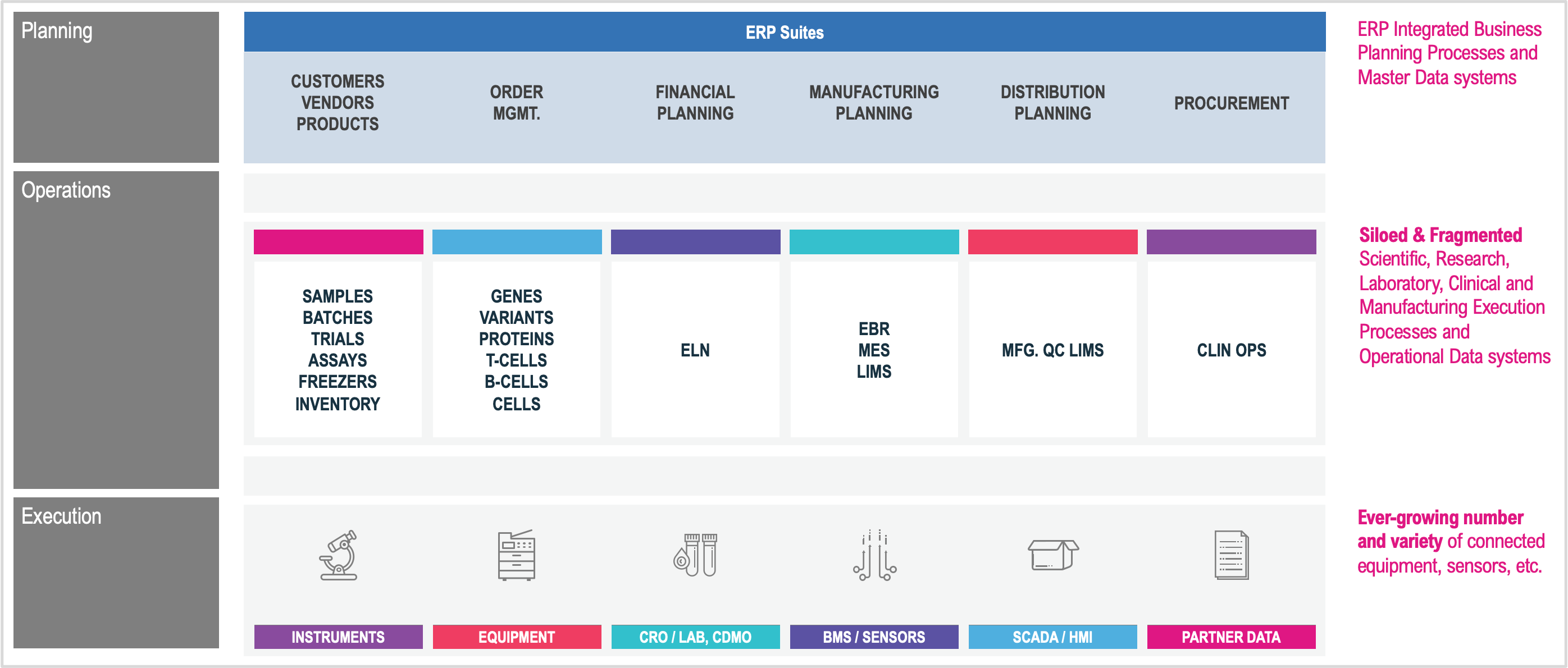
L7 Informatics offers a solution to unify these three levels by creating a single platform, L7|ESP, in which operations can communicate with both planning and execution.
Using L7|ESP, operational data and processes can seamlessly communicate with instruments, equipment, and external partners to improve utilization and efficiency. L7|ESP can work with ERP systems to convey this unified operational information, enabling better execution and data-quality.
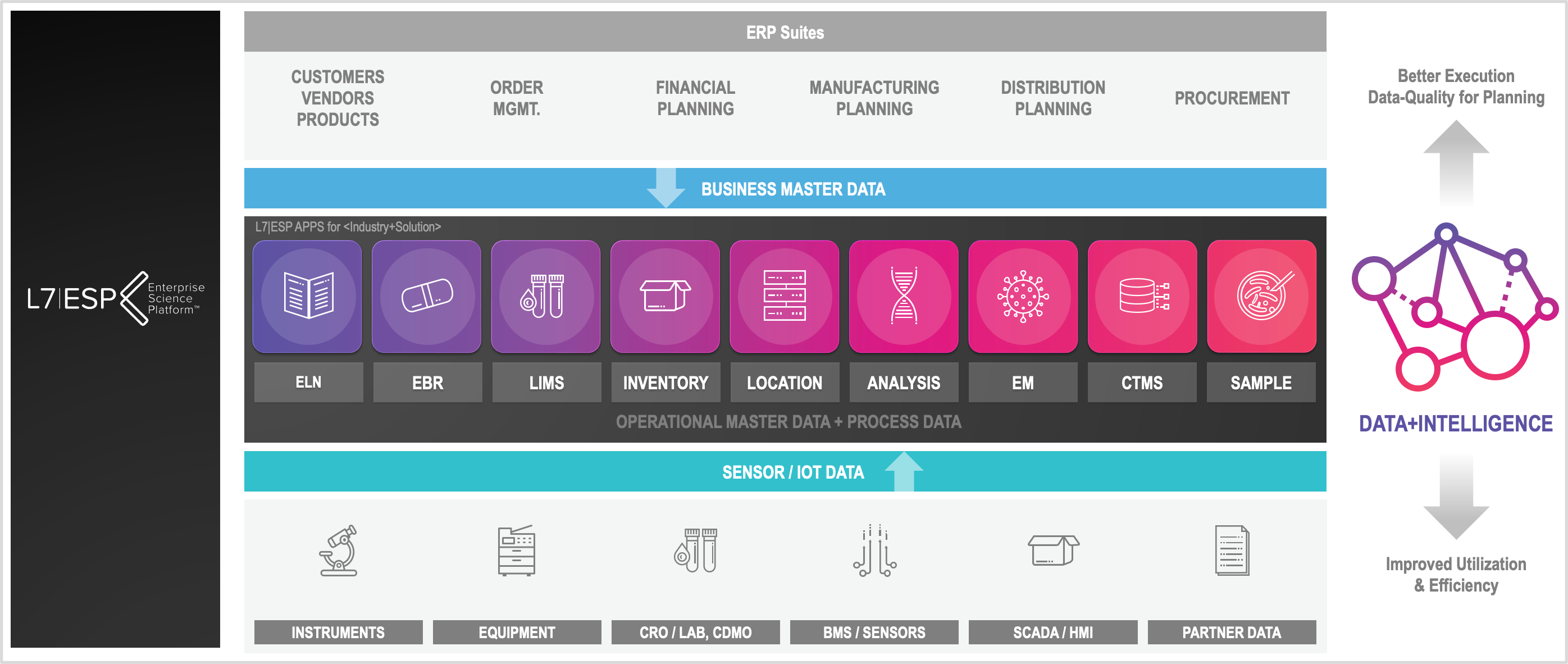
What does the L7|ESP application ecosystem look like?
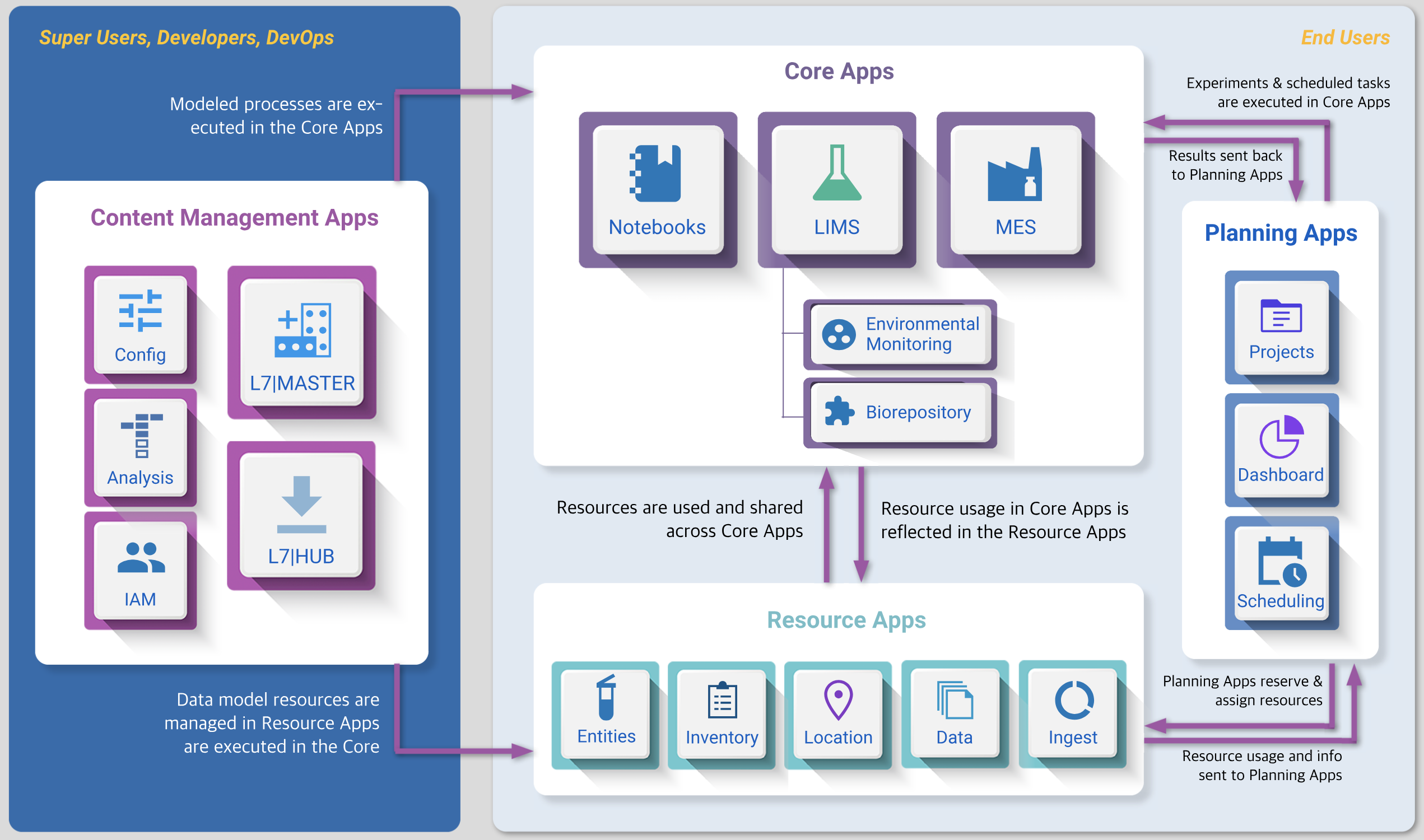 |
Which apps will you use to model and test your LIMS content?
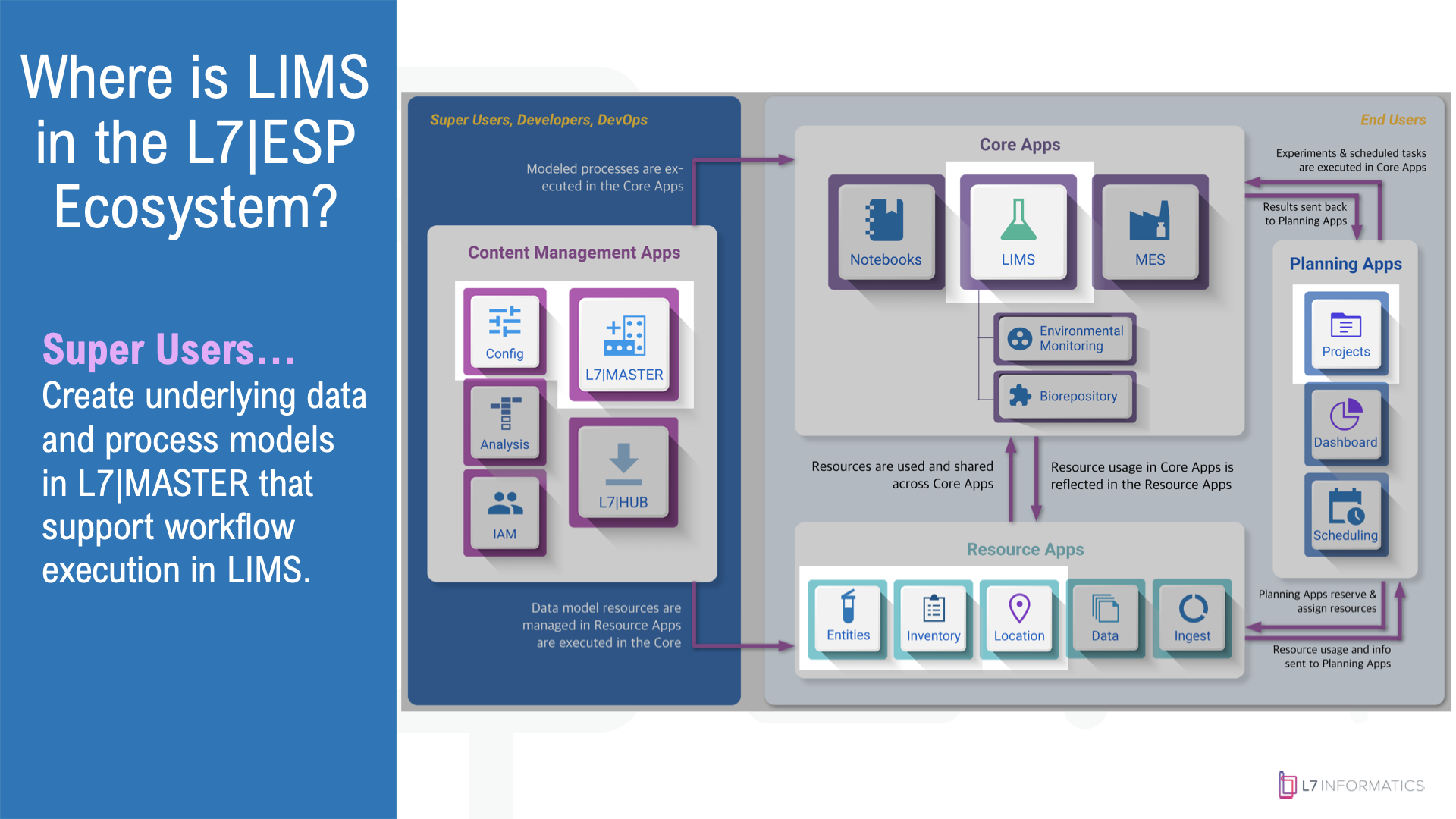 |
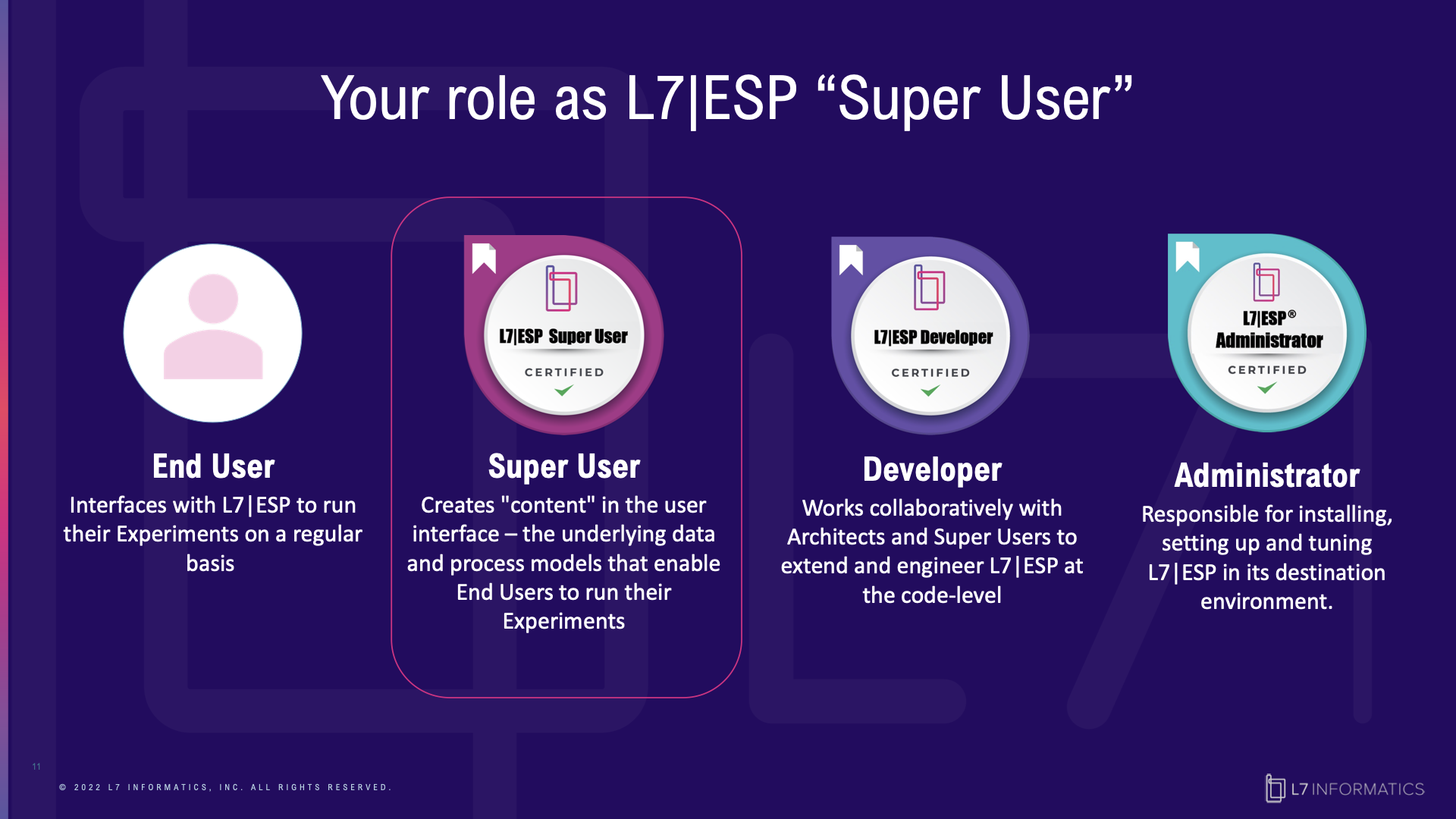 |
How does L7|ESP create a unified platform?
L7|ESP combines the digitization of data and the digitalization of processes to unify business operations.
Digitization - is the conversion of analog information to digital (paper to electronic) and automation of existing manual and paper-based processes.
Digitalization - is the use of digital technologies and digitized data to impact how work gets done and transform how departments within a company interact – and how the company interacts with its value chain partners.
What are the building blocks of L7|ESP?
L7|ESP tackles complex business operations by creating small building blocks that can be reused and extended in various applications.
The Entity is the smallest data component, it represents any resource that is submitted to, or a component of, a business process (i.e., Patient or Blood Sample).
The Protocol is the smallest process component, it represents a series of steps performed on one (1) or more Entities (i.e., the Patient donates a Blood Sample).
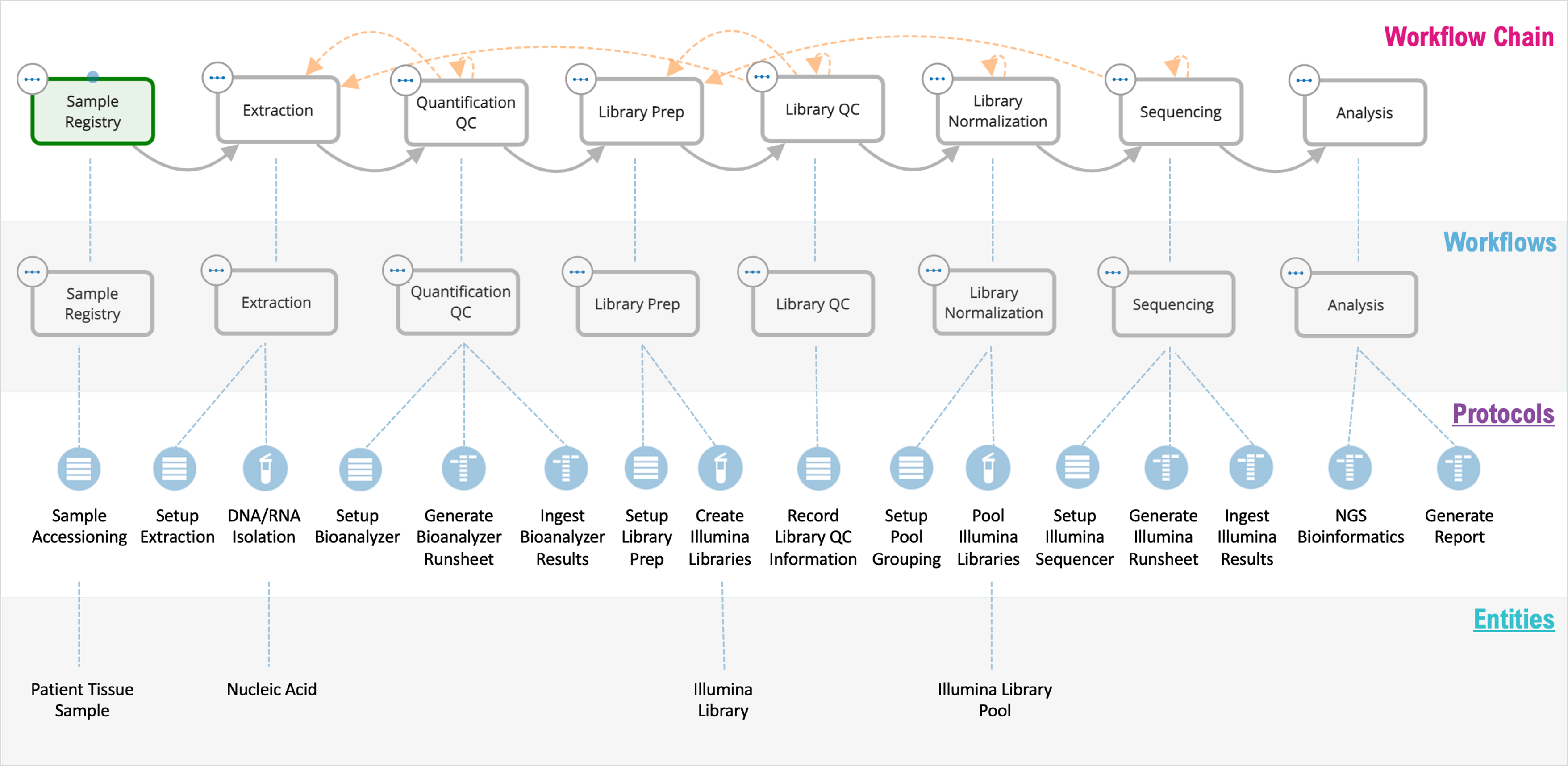
Who uses L7|ESP?
L7|ESP is being used to unify data and processes for customers across five (5) industries:
Therapeutics
Medicine
Diagnostics
Research
Agriculture